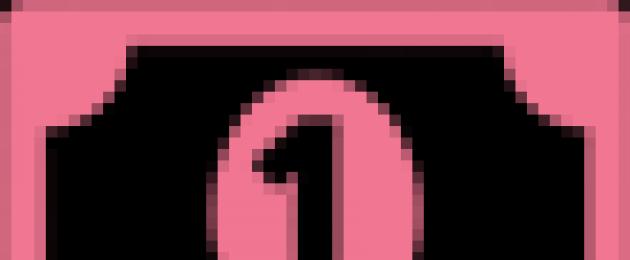Laser vision correction is the most modern and effective method of correcting defects such as myopia (myopia), astigmatism or farsightedness. Laser eye surgery is a real breakthrough in ophthalmology, the essence of which is reduced to an instant and painless correction of eye refraction. The application of the procedure allows you to change the shape of the cornea so that the image of objects focused on the retina of the eye. Modern methods make it possible to return good vision and save the patient from wearing glasses or contact lenses.
![]()
Photo: Laser vision correction - types of surgery
There are several basic methods for correcting vision with a laser. These include:
- FRK (photorefractive keratectomy) is the oldest correction method, which is mainly used at the initial stage of myopia (myopia). Its essence lies in the removal of the corneal epithelium and the subsequent evaporation of its deep layers (stroma and bowman membrane). The rehabilitation period after surgery takes 4 to 5 days.
- LASEK (subepithelial keratomileusis) - this method is indicated in the case when the patient has a too thin cornea. The essence of the procedure lies in the formation of a special valve from the bowman membrane, epithelium and stroma. This valve is fixed and fixed with a temporary contact lens. The recovery period takes a short time.
- Lasik(laser keratomillosis) - a more modern and gentle method of laser exposure. The operation is performed in two stages: on the first, the laser beam cuts off the top layer of the cornea. On the second - the elimination of defects in its deep layers and the return of the cut section into place. The operation allows to cope with a high degree of myopia, hyperopia and correct the manifestations of astigmatism. The recovery process after the intervention occurs quickly and with almost no complications.
In turn, the method of laser keratomillosis (LASIK ) combines several modifications that differ from each other in some nuances:
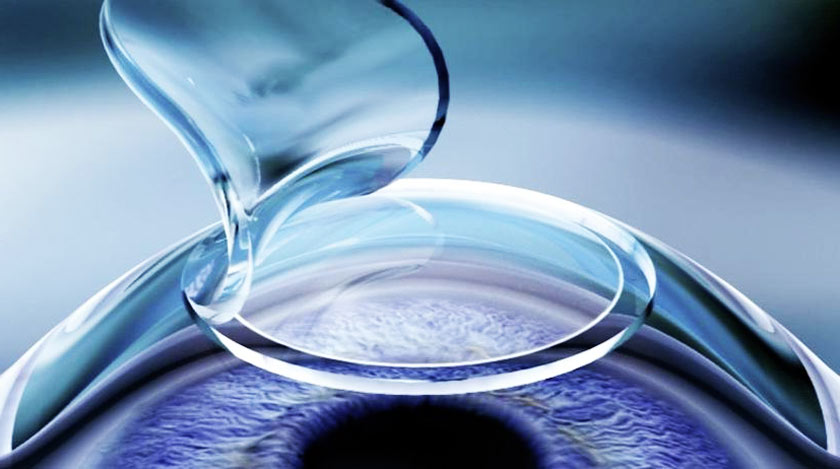
Photo: laser keratomillosis method (LASIK)
- Super LASIK - in contrast to the basic method, it is performed solely on the individual parameters of the patient, using special high-precision equipment, and therefore gives the best results. Currently, this method is used in all modern centers of vision correction, and practically supplanted the LASIK method.
- Femto Super LASIK - the method is in many ways similar to the Super LASIK procedure. The only difference is that the cornea is cut not by a microkerarator, but by a unique femto laser.
- Presby LASIK - this procedure is carried out taking into account age-related changes in vision and is recommended for use in patients over 40 years old.
All of the above methods have their own characteristics, pros and cons. The choice of method of exposure is carried out by a doctor, taking into account the individual characteristics of the patient. According to experts and patients - the best laser correction The view is done using the FRK and LASIK methods.
Who is shown?
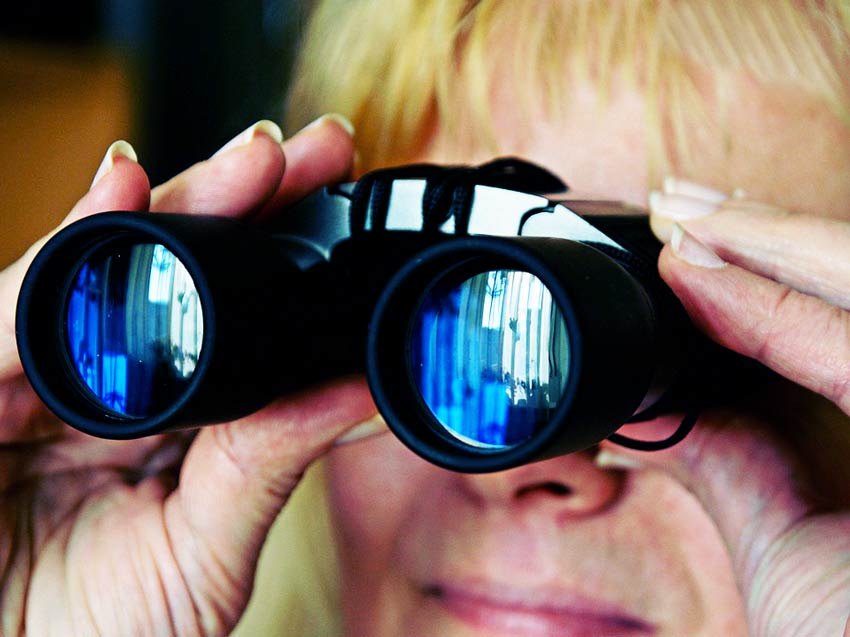
Photo: Who shows laser vision correction?
- myopia (myopia) ranging from -1 to - 13 diopters;
- hyperopia (farsightedness) with indications from + 1 to + 6 diopters;
- astigmatism (from +/- 1 to +/- 4 diopters).
In recent years, more and more patients are resorting specifically to laser vision correction. Why is this technique so popular? Many patients believe that glasses spoil their appearance and do not want to wear them. Correction of vision using contact lenses is also not an ideal solution to the problem, because some patients simply cannot get used to them.
The lenses often cause allergic reactions and provoke individual intolerance by direct contact with the surface of the eye. Therefore, correcting the vision with a laser seems to be the ideal solution to deal with the problem in a short time. Before the operation, the patient should undergo a full examination, only on the basis of his results, the ophthalmologist decides whether laser vision correction can be done.
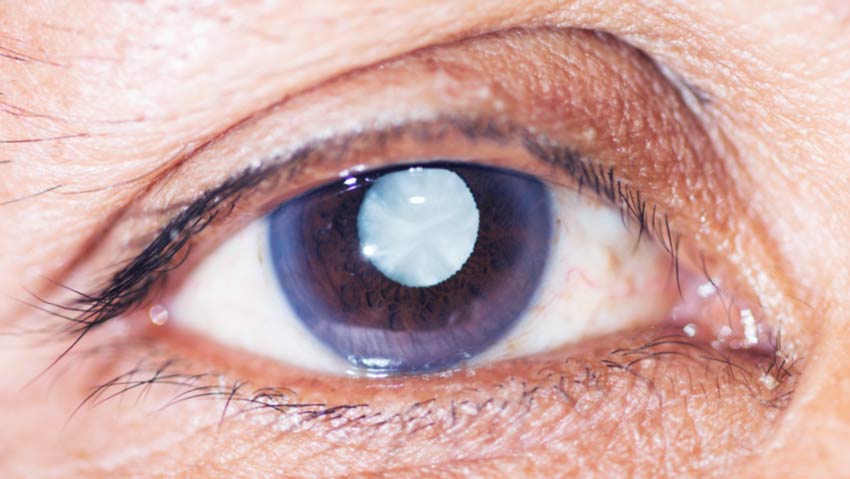
There is a list of conditions under which laser vision correction is prohibited. These include:
- progressive myopia;
- cataract;
- glaucoma;
- iridocyclitis;
- previously performed operations on the retina;
- inflammatory diseases of the organs of vision;
- corneal dystrophic changes;
- the period of pregnancy and breastfeeding;
- systemic diseases;
- severe diabetes mellitus;
- age up to 18 years;
- immunodeficiency states.
This is not a complete list of contraindications. Clarify possible limitations will help specialist - an ophthalmologist after a comprehensive examination. Many experts advise a new effective drug.
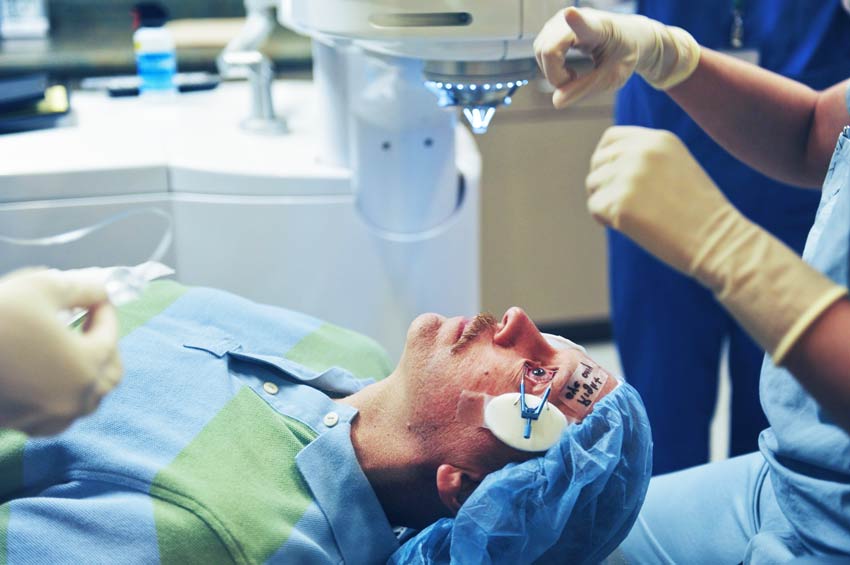
Photo: How does laser vision correction work?
The operation of laser vision correction requires advance preparation. The patient undergoes a comprehensive examination, passes the necessary tests and, in the absence of contraindications, receives a referral for the operation. A week before the upcoming intervention, you should refuse to wear contact lenses, 48 hours before the procedure - to eliminate alcohol intake.
Before the operation, an anesthetic is instilled into the eye of the patient, waiting for a certain time, and then invited to the operating table. The area around the eyes is treated with an antiseptic solution. Next, an expander is inserted into the eye that prevents involuntary blinking. After that, the specialist can proceed to the procedure. Let's take a closer look at how laser vision correction is performed using different techniques.
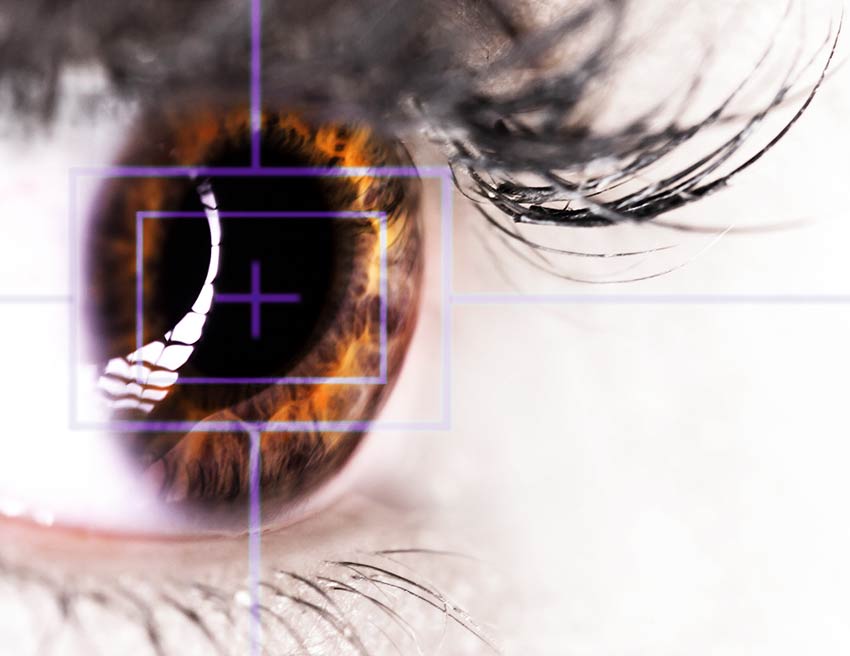
During the operation, a wide beam of an excimer laser is exposed to the cornea of the eye. According to a pre-calculated individual program, the laser beam flattens the corneal epithelium due to the process of cold evaporation (ablation) and thus simulates a new surface.
Laser vision correction lasts only a few minutes, all this time the patient must lie still and look at one point. Upon completion of the procedure, drops are instilled into the eyes with antibacterial and anti-inflammatory effects and closed with a bandage.
If the treatment is carried out in the hospital, laser vision correction is carried out immediately on both eyes. After the procedure, the patient is under the supervision of doctors for another 3-4 days. If the operation is performed on an outpatient basis, then first make an adjustment on one eye, and after five days - on the other.
Immediately after the intervention, discomfort is possible in the operated eyes, feeling foreign bodyphotophobia These manifestations disappear in a few hours. The recovery period takes 3 - 4 days, at this time the patient may feel soreness, therefore it is recommended to use painkillers.
After removing the dressing, visual acuity is gradually restored and soon the patient can return to normal life. In the future, for 2 months, anti-inflammatory drops should be instilled into the eyes.
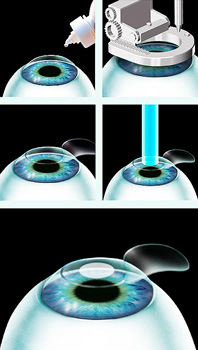
During the operation, using a special device (microkeratome), a flap is cut out from the surface layers of the cornea to provide access to the deeper layers. All parameters are pre-set in a computer program to ensure the operation of the device.
Next, the flap turns to the side, and the laser beam evaporates corneal tissue, changing their curvature. At the end of the laser beam exposure, the flap is laid in its place and fixed without stitching due to the adhesive properties of the cornea collagen. At the end of the procedure, they put on a soft eye. contact lens, which performs the function of protecting the cornea. Remove it in a few days.
The first day after surgery, the patient spends in the hospital. If no complications arise, he is sent home the next day. The vision begins to recover within a few hours after the procedure and in the next 2 weeks it reaches the maximum level. During the recovery period, the patient must follow all medical recommendations and use drops with antibacterial and anti-inflammatory effects for 2-3 weeks.
After the operation, the patient will be instructed in detail what can and cannot be done after laser vision correction. How thoroughly all the recommendations will be carried out depends on the final result of the correction. In the future, the patient should be under the supervision of a specialist and be on a routine examination to the ophthalmologist 2 weeks, 3 and 6 months after surgery.
The rehabilitation period - what after the operation?

Are there any limitations after laser vision correction? Undoubtedly, after the intervention, the patient must comply with a number of requirements necessary for quick, full recovery and prevention of possible complications.
- In the first days after surgery, you should not touch your eyes or rub your eyelids. This may cause a corneal flap to move.
- It is not recommended to wash for several days after the intervention.
- After the procedure, PRK is allowed to wash after 3-4 days, when the bandage is removed from the eyes. After 1 week, you can use cosmetics. After 2 weeks you can watch TV and drive a car.
- After the LASIK procedure, you should not touch your eyes, rub them, use cosmetics, hairspray or sprays for 2 weeks.
- It is not recommended to go to the swimming pool, bath or sauna for 3 months after laser vision correction.
- All patients who underwent surgery should exclude any factors that contribute to an increase in intraocular pressure and corneal edema. It is necessary to avoid long work at the computer and other high visual loads, to eliminate hard physical labor, homework associated with torso (washing floors, washing, etc.).
- For several months after the operation it is forbidden to engage in contact sports.
- During the recovery period, you should not consume large amounts of fluid. Alcohol intake is strictly prohibited.
Possible complications
As with any intervention, laser vision correction can sometimes lead to undesirable complications. This is due to inadequate preoperative preparation or inaccurately calculated parameters. If a patient complains of poor eyesight after laser correction, this may be a manifestation of a condition such as amblyopia (uncorrectable reduction in visual acuity). In addition, some complications may occur during surgery, immediately after it or in the late postoperative period. We list the possible complications:
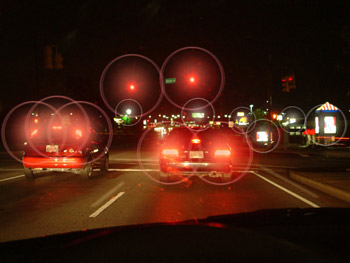
If a number of complications, such as slight corneal opacification, dry eye or bacterial keratitis can be eliminated with the help of medications, then some undesirable effects of the operation will require additional surgical intervention. These include: incomplete correction (when visual acuity is not fully restored), insufficient removal of the epithelium, or pronounced clouding of the cornea of the eye.

Photo: What will happen to the eyes in 10 years
Patients who decide on laser vision correction should understand that this method only fights the consequences, but does not affect the causes of the disease. Therefore, over time, the effect of “polishing” with a laser may be weakened and the patient will again have to return to the previous correction methods, that is, to glasses or contact lenses.
The eyeball is also subject to natural aging. With age, the state of the retina can change even after a qualitatively performed operation. Age problems or hormonal disorders (for example, during pregnancy or during menopause) can cause serious problems with the cornea. It is possible that another intervention will be needed and the corrective procedure will have to be repeated. Therefore, before you decide on a laser correction, you need to weigh the pros and cons.

Photo: Pros of laser vision correction
- safety and painlessness;
- the ability to make simultaneous correction of both eyes;
- use for various visual impairments (myopia, hyperopia, astigmatism);
- Laser vision correction is performed for patients aged 18 to 55 years;
- the procedure is quick and in most cases on an outpatient basis;
- the recovery period is short, a few hours after the intervention, the patient can go home;
- predictable results and rapid recovery of vision;
- the ability to correct myopia or hyperopia of a high degree;
- stability of the result, which remains for many years.
Minuses
- some pain and discomfort after the procedure;
- the possibility of complications;
- risk of damage to the nerve endings and corneal epithelium;
- long-term use (for several months) of drugs (in the form of drops);
- some post operation restrictions associated with working at a computer or household duties;
- as the body ages, vision may weaken again;
- quite high cost of laser correction.
How much does laser vision correction cost? The cost of the operation is quite high. We give the average prices for the procedure:
- LASIK surgery - from 27,000 rubles;
- Correction using the PRK method - from 35,000 rubles;
- The operation according to the FEMTO LASIK method - from 55,000 rubles.
All prices for the microsurgical procedure are for one eye.
Attempts to rid the patient of glasses and lenses radically from the middle of the last century. At the beginning of the path, the operations were built on the intervention of the surgeon directly into the structure of the cornea of the eye, by applying special incisions with special tools. At that time, radial keratotomy ("notches on the cornea") was considered the most promising. This is the famous “method of Academician Fedorov”, alas, not justified due to the large number of postoperative complications and the instability of the results.
But time does not stand still and today laser technologies have replaced the imperfections of the human factor. A whole field of ophthalmology has been formed, solving the problems of refractive disorders by means of laser surgery - low-impact, safe and very effective.
What laser vision correction do better?
Year after year, technologies for the correction of refractive pathologies using a laser are being developed and improved.
PRK - Photorefractive keratectomy (Photo Refractive keratectomy)
The first PRK, carried out in 1985, was a revolutionary case of using an excimer laser in ophthalmic surgery. The operation was based on a contactless change of the stroma geometry by a laser beam, while the upper layers of the cornea were removed (mechanically or chemically). This caused significant discomfort in patients in the postoperative period. Today, the PRK method has undergone changes and is already used according to an updated method, in which the outer layers of the cornea are not removed (Trans-PRK).
LASIK - laser keratomileusis (LASIK - Assisted in Situ Karetomileusis)
Developed in 1989, this method has an undeniable advantage - there is no need to remove the corneal epithelium. Instead, with a special device, a microkeratome, a thin layer of epithelium is cut off in the form of a flap (flap). The flap is shifted, allowing for correction on the middle layers of the cornea with an excimer laser. Then the flap returns exactly in place, which makes damage to the upper layers of the cornea during the operation minimal.
However, with this technology there are significant restrictions on the thickness of the cornea, there is a risk of displacement of the flap with injuries and similar effects.
Femto-LASIK (Femto-Lasik, All Laser Lasik)
This is one of the modifications of the universal LASIK technique - completely laser. The only and most important difference between it and its predecessor was the method of flapping. According to this technique, mechanical tools are completely excluded, and a special femtosecond laser fills everyone. He also forms a corneal flap without a traumatic dissection of the layers of the cornea.
Such an approach greatly increased the safety of the correction and reduced the risk of potential side effects (including the likelihood of corneal astigmatism). In addition, the new technology allowed patients to carry out operations even with a very thin cornea, which was previously simply refused.
ReLEx SMILE - SMILE (Small Incision Lenticule Extraction)
SMILE is such a "smiling" name, received the newest, least invasive and most effective technology of laser vision correction. The technique of the new generation was developed by the specialists of the Smile Eyes clinic in close cooperation with the engineers of the famous company Zeiss, which produces ultra-precise medical lasers.
Its creator is rightly considered to be the head of the Smile Eyes ophthalmology center in Marburg (Germany) and for many years included in the TOP of the best German refractive surgeons according to the magazine Focus.
The revolutionary absence of a new correction method was the complete absence of a cut flap of a cornea flap. In the new technique, this step is simply not required. With the VisuMax femtosecond laser beam, the surgeon forms a thin optical lenticule (lens) directly inside the cornea. Further, through a small incision (up to 4 mm), this lenticule is carefully removed.
Such an operation in the best way preserves the natural structure of the cornea, almost completely eliminating the possibility of negative consequences. According to specialists, the operated patients already after 2 hours after the intervention do not have the discomfort and painful sensations that are present when using other methods of correction.
Among other advantages of the method:
· The possibility of vision correction in patients with a high degree of myopia and a thin cornea;
· Superfast healing and the shortest rehabilitation period;
· Without flap formation (without the risk of its displacement);
· 100% laser non-knife technology;
· The possibility of vision correction in patients with dry eye syndrome.
Where better to do laser vision correction?
The eyes of each person are completely individual. Therefore, what method of laser correction is right for you, only an experienced refractive surgeon will determine after a detailed ophthalmologic examination.
In most clinics in our country, patients are offered a standard solution to the problem - PRK and LASIK techniques (including known modifications: PRK, LASIK, and FemtoLASIK). And only a limited number of ophthalmologic centers have the necessary equipment and experience for carrying out laser correction using ReLEx SMILE technology, although it provides the most predictable results and guarantees the least risk for the patient.
The Smile Eyes Augenklinik Moscau Clinic was the first in Russia to master and implement the Smile technique using 100% German technology. And now this is how we perform up to 80% of all laser vision correction operations.

The Smile Eyes Ophthalmology Center in Moscow is one of the branches of the Smile Eyes international clinic network, which offers not only all types of laser vision correction, but also refractive lens replacement, phakic lens implantation (F-IOL) and other operations for better vision .
Ocular pathologies today are found in every second. A person with absolutely healthy visual organs is extremely difficult to find.
It is important to undergo diagnosis and start therapy. Otherwise, there is a risk of losing sight forever.
One of the most common ophthalmologic diseases is myopia. At the same time, the eye is lengthened, and the rays of light focus improperly on the retina. The image is formed in front of the retina, and not on it, as it should be in a healthy eye.
As a result, a person sees poorly into the distance. The picture is blurred with distance.
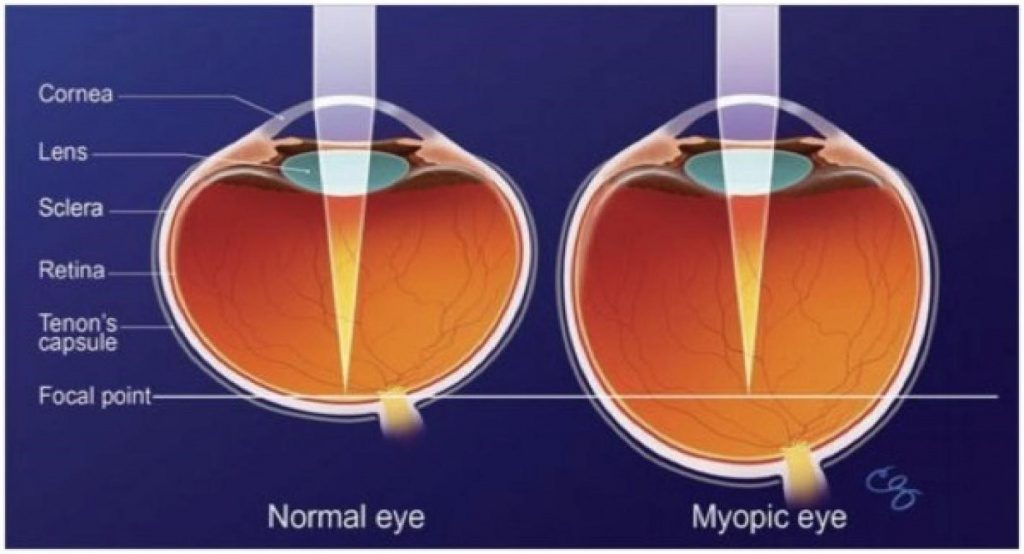
You can get rid of myopia forever only with the help of eye surgery. The price of such treatment in Moscow depends on the reputation of the clinic and the experience of the ophthalmosurgeon.
- Moscow Eye Clinic;
- IRI GB them. Helmholtz;
- MNTK them. S.N. Fedorov;
- Ophthalmological center "Vision";
- Eye surgery center on Mira Avenue.
Moscow Eye Clinic (CIM)
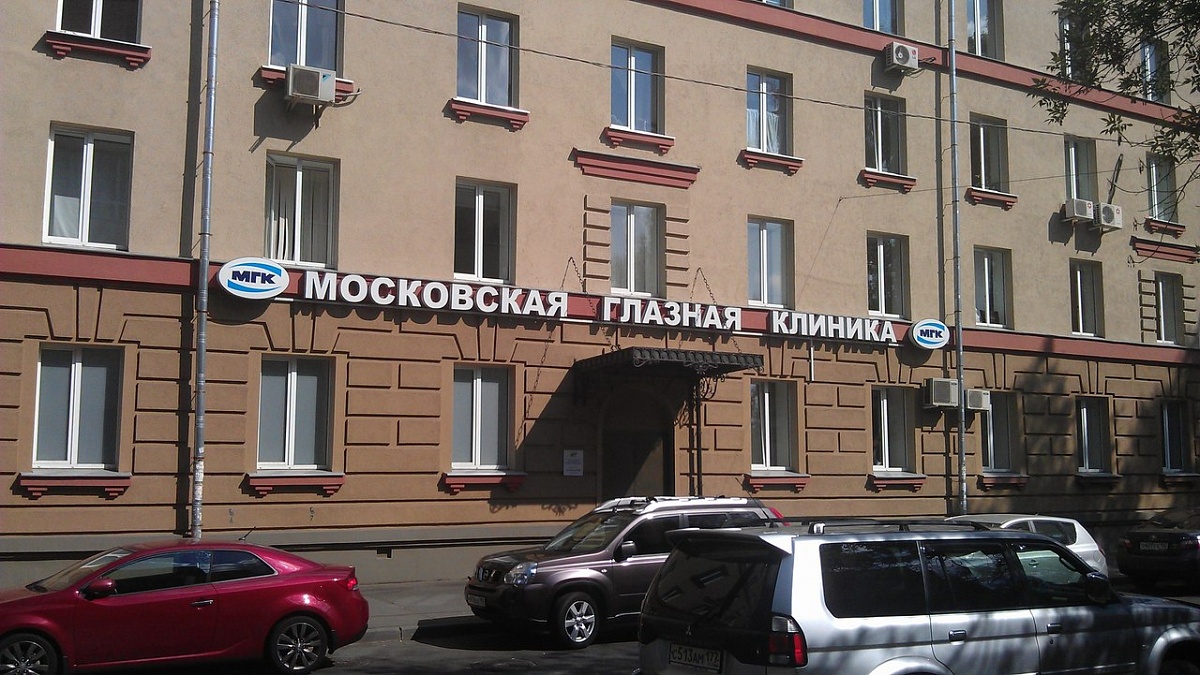
The doctors of this medical center deal with all areas of ophthalmological ailments. One of the leading industries is eye surgery.
Patients receive quality service without long queues and at reasonable prices for the capital.
If patients with complicated cases are treated with MSD, then the consultation is conducted by the teachers of the best Moscow ophthalmological universities.
At the hospital, myopia is diagnosed at all stages of its manifestation. Upon reaching the age of 18, the ophthalmologist advises laser correction, which will relieve the patient from the illness forever.
This medical center uses the latest equipment, and applies modern developments in the treatment of myopia.
Pathology with a deviation of -15 D is successfully eliminated with a laser. Patients whose degree of impairment is greater than -15 D, advises to conduct microsurgery and install a phakic lens.
Important: The cost of the operation for 1 eye is 26,000 rubles, for both - 52,000 rubles.
The following ophthalmologists work at the Moscow Eye Clinic:
- Sergey Aleksandrovich Tsvetkov (founder);
- Natalia Ivanovna Fomenko (deputy head physician);
- Yuriy Borisovich Solominsky (MD, Professor);
- Svetlana Gavrilovna Chernysheva (MD, Professor) and others.
In MGK practice treatment of myopia according to Bates. Such methods have proven to be effective in many patients whose vision has been greatly improved thanks to an individually selected therapeutic plan.
IRI GB them. Helmholtz

This clinic is considered the largest in Moscow. It develops and exists thanks to the director - V.V. Neroevu. He also heads the department of eye diseases at the medical institute of the capital.
In the clinic to them. Helmholtz successfully operating the most complex cases of myopia. It treats myopia complicated by astigmatism, strabismus, glaucoma, etc.
Experienced ophthalmologists will advise when and how best to perform the operation. If the patient needs some time after the therapy to be in the hospital, he will be provided with the necessary care.
Important: The price of laser correction of one eye varies from 38,000 to 40,000 rubles. The cost depends on the degree of pathology.
The medical composition of the clinic includes:
- 17 professors with experience of over 20 years;
- 39 doctors of science;
- 88 candidates for the doctor of science;
- 5 honored workers of science;
- 11 recognized doctors of the Russian Federation.
Referring to the Helmholtz clinic, the patient can be sure that he will be relieved of myopia forever, and the operation itself will pass without complications.
MNTK them. S.N. Federov
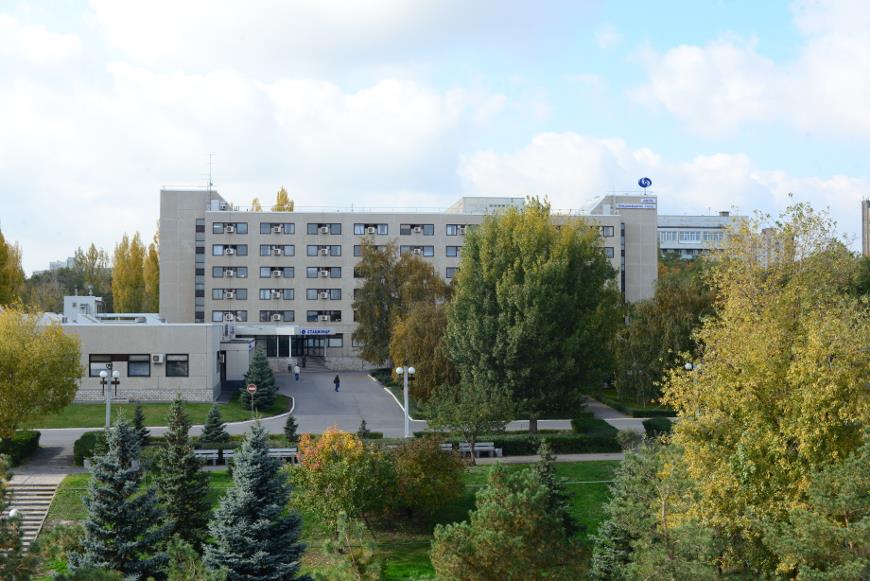
The clinic has been operating since 1986. Its founder was the famous ophthalmologist Svyatoslav Nikolaevich Fedorov. The motto of this medical institution was the famous words of its founder: “Beautiful eyes for everyone”.
MNTK them. S.N. Fedorov is not only successful ophthalmology clinic, but also a research center. That is why here they carry out operations according to author's methods developed by professors and honored oculists of the country.
Eye microsurgery is the main direction of this medical institution. More than a third of Moscow residents are served here, since they trust the experience and professionalism of ophthalmologists.
Important: Prices for laser correction of myopia range from 20,000 to 50,000 rubles per eye.
Before the operation, the ophthalmologist performs a comprehensive diagnosis of the patient:
- determines the degree of development of the pathology;
- identifies comorbidities;
- get acquainted with the individual characteristics of the patient.
Ophthalmological center "Vision"
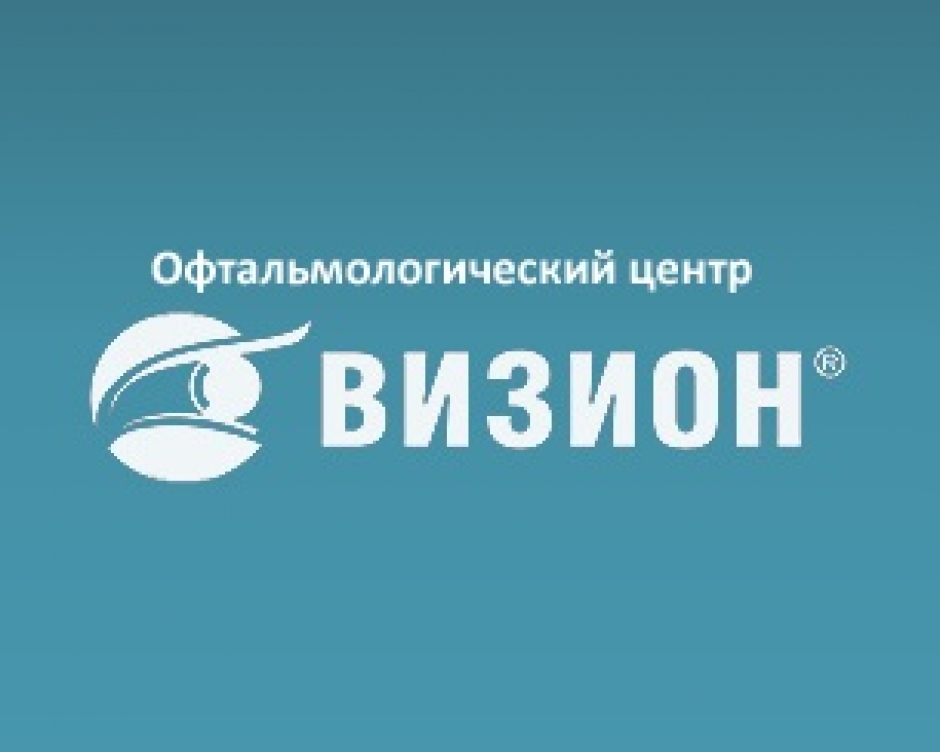
Vision in Moscow
Eye clinic "Vision" is young. She has been working since 2005. However, despite the young age given medical Center managed to gain the trust and recognition of not only metropolitan residents, but also patients from remote corners of the Russian Federation.
Ophthalmologic center is a multidisciplinary.
There are tremendous advances in the treatment of myopia. Experienced ophthalmologists with experience of over 20 years successfully carry out laser correction and are engaged in eye microsurgery in especially difficult cases.
Before surgery, the doctor must conduct a full examination of the patient. Only the product of all diagnostic manipulations resolves the question of the type of laser correction or the complete replacement of the lens with an IOL.
The clinic is managed by Boris Karlovich Gorodetsky. The ophthalmologist has extensive experience in complex operations. He helped hundreds of people across Russia gain 100% of their eyesight.
In Moscow, the treatment of myopia according to the Avetisov method is practiced in the Vision. This method of therapy was a salvation for many patients with advanced stages of the disease.
Important: The cost of the operation on one eye is 27,000-56,000 rubles.
In the ophthalmological center "Vision" successfully treat myopia for over 15 years. Having decided to carry out laser correction, you can safely contact this medical institution.
Eye Surgery Center on Prospekt Mira

This clinic is multidisciplinary. It employs highly specialized ophthalmologists who also specialize in myopia.
The operation is carried out by highly skilled ophthalmosurgeons who have experience and work experience of more than 20 years.
For each patient practiced an individual approach. The survey aims to identify the root causes of myopia, which can be hidden in:
- abnormal development of the eyeballs;
- neoplasms in the brain;
- hypodynamia;
- head injuries;
- genetic predisposition, etc.
Treatment of myopia in Moscow is a costly business. However, in the center of eye surgery, patients find the high professionalism of doctors in combination with reasonable prices.
- In contact with 0
- Google+ 0
- OK 0
- Facebook 0

